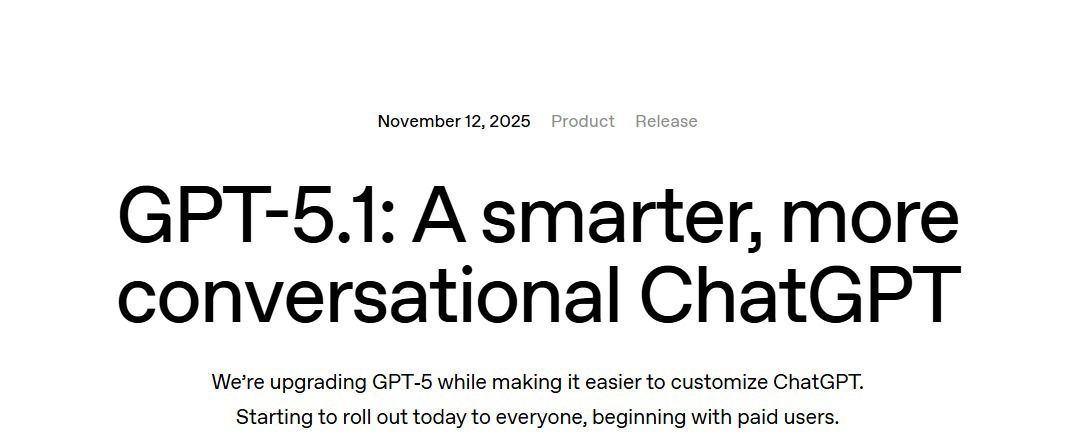OpenAI on Nov 12 rolled out GPT‑5.1, a more conversational, warmer version of its flagship AI model, bringing tone-customisation tools and two model variants to enhance how users chat with ChatGPT.
In its blog post, OpenAI said that GPT-5.1 is an improvement “in both intelligence and communication style”.
The update introduces two model variants: GPT-5.1 Instant, designed to be “warmer by default, more conversational, and better at following your instructions”, and GPT-5.1 Thinking, focused on reasoning, “easier to understand, faster on simple tasks, more persistent on complex ones.”
The personalisation of tone features strongly in this release. Users can now pick from preset styles such as ‘Friendly’, ‘Efficient’, ‘Professional’, ‘Candid’ or ‘Quirky’, and future versions will allow even finer tuning of tone and style.
In a post on X, OpenAI Co-Founder and CEO Sam Altman said, "GPT-5.1 is out! It's a nice upgrade".
"The intelligence and style improvements are good too," Altman also wrote.
ALSO READ | Rising chip costs set to drive smartphone prices higher
By giving the AI a “voice” that suits you, OpenAI hopes to improve the chat experience and make interactions feel less robotic.
Roll-out begins for paid users, with free users to follow
The rollout starts today with paid users of ChatGPT (Pro, Plus, Go, Business) and will gradually extend to free and logged-out users. Meanwhile, older GPT-5 models will remain accessible for around three months so users can compare and adapt.
Analysts say the upgrade underscores how much the user experience, not just raw model capability, is becoming a key battleground in the AI arms race. By making the model feel more natural in conversation and more responsive to preferences, OpenAI aims to keep ChatGPT ahead of competitors.
Still, despite the emphasis on tone and style, some observers caution that the underlying technical leaps may be more evolutionary than revolutionary. For instance, while GPT-5.1 promises improved reasoning, safer responses and smoother flow, the benchmarks and internal data for those improvements are less prominent in the public domain.











